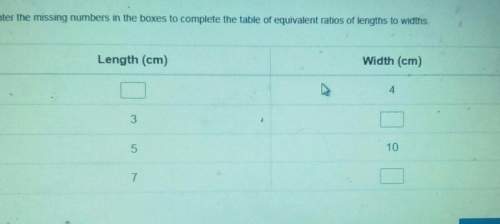Which statement about rhombuses and parallelograms is true?
a) rhombuses always have fo...

Mathematics, 29.10.2019 06:31 ecarter8967
Which statement about rhombuses and parallelograms is true?
a) rhombuses always have four equal sides; parallelograms sometimes do not.
b) rhombuses always have four right angles; parallelograms sometimes do not.
c) parallelograms always have opposite sides equal; rhombuses sometimes do not.
d) parallelograms always have opposite sides parallel; rhombuses sometimes do not.

Answers: 1


Other questions on the subject: Mathematics

Mathematics, 21.06.2019 14:50, brad7330
An assembly consists of two mechanical components. suppose that the probabilities that the first and second components meet specifications are 0.87 and 0.84. assume that the components are independent. determine the probability mass function of the number of components in the assembly that meet specifications. x
Answers: 1

Mathematics, 21.06.2019 17:00, ayoismeisalex
Describe what moves you could use to create the transformation of the original image shown at right
Answers: 1

Mathematics, 21.06.2019 18:30, genyjoannerubiera
Isuck at math ; ^; m a student solved this problem and said the answer is 3 feet. chase had a roll of ribbon that contained 7 7/8 feet of ribbon. he cut off one piece that was 3 5/8 feet long and another piece that was 1 1/4 feet from the roll. how much ribbon was left on the roll? is the student's answer reasonable? yes, the answer is reasonable. no, the answer is not reasonable. it should be about 2 feet. no, the answer is not reasonable. it should be about 13 feet. no, the answer is not reasonable. it should be about 4 feet.
Answers: 1
You know the right answer?
Questions in other subjects:








History, 24.01.2020 21:31






